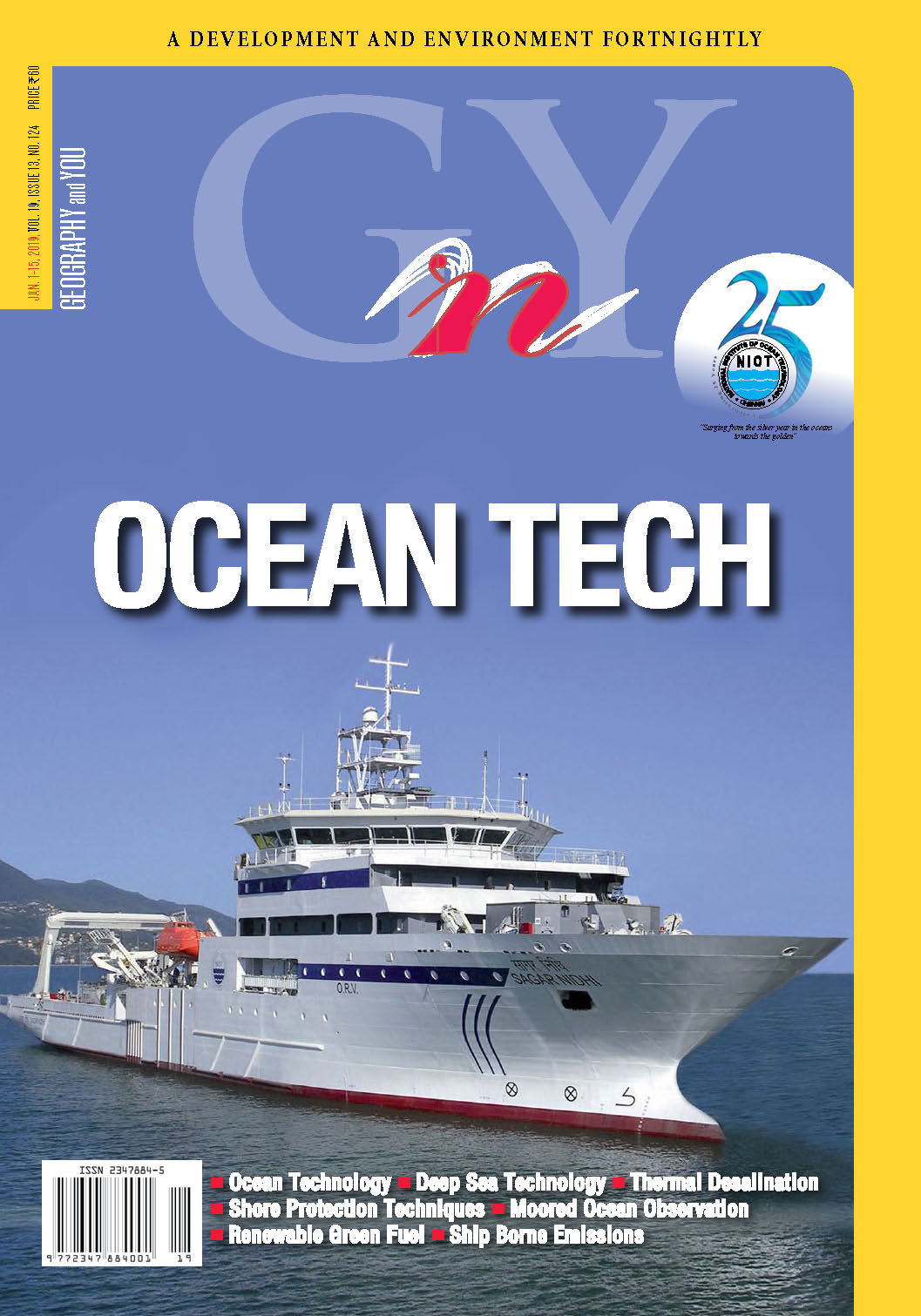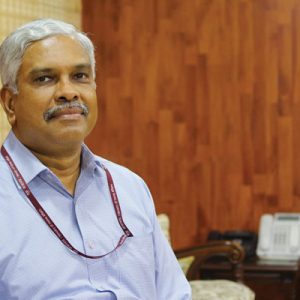
Inside this issue
NIOT Special
In the last 25 years, the National Institute of Ocean Technology (NIOT) has progressed from developing technology for shallow waters to deep waters. Coastal communities too have been provided access to desalinised potable water and have benefited from the tsunami warning system.
The 7,500 km long Indian coastline faces severe threats from the process of coastal erosion. The National Institute of Ocean Technology, through data collection, scientific modelling and engineering activities, has attempted to protect several coastlines of which the Kadalur Periyakuppam coast is one.
The 7,500 kms long Indian coastline is dotted with many major and minor ports. The temporal increase in the volume of cargo is also indicative of the rising emissions by ships which NIOT is trying to minimise using innovative strategies.
Ocean Observation Systems Group of National Institute of Ocean Technology has established a moored buoy network consisting of twelve deepwater buoys, four coastal buoys and two tsunami buoys at strategic locations in the Northern Indian Ocean along with an IndARC buoy in Arctic region. It also maintains an exclusive buoy for validation of satellite data.
Oceans cover about 71 per cent of the earth’s surface, but remain mostly unmapped. Since an efficient way to study oceans is through sound, Earth System Science Organisation-National Institute of Ocean Technology (ESSO-NIOT) has been developing various devices that can help monitor the underwater world.
The LTTD plant, commissioned and demonstrated successfully off Kavaratti, Lakshadweep in 2004, has given people in the island easy access to potable water.
With their capacity to absorb hydrocarbons and non-polar lipid and the ability to survive in harsh conditions, microalgae have emerged as a viable alternative. NIOT recently isolated more than 260 algal strains and cultivated them to produce bio-diesel.
The NIOT was established in 1993 for catering to the requirement of developing technology for exploring oceans and harnessing underwater resources.
In Conversation With
In conversation with Dr M N Rajeevan, Secretary, Ministry of Earth Sciences, Government of India.
In conversation with Dr M A Atmanand, Director, National Institute of Ocean Technology (NIOT), Ministry of Earth Sciences (MoES) and Chair IOCINDIO (UNESCO).
In brief
Charting a New Course for the Oceans What is the role of oceans in shaping our future and ensure sustainability of the Planet Earth? We know that life originated in the ocean almost three billion years earlier than on land which means that oceans make the planet Earth habitable. We need to focus

